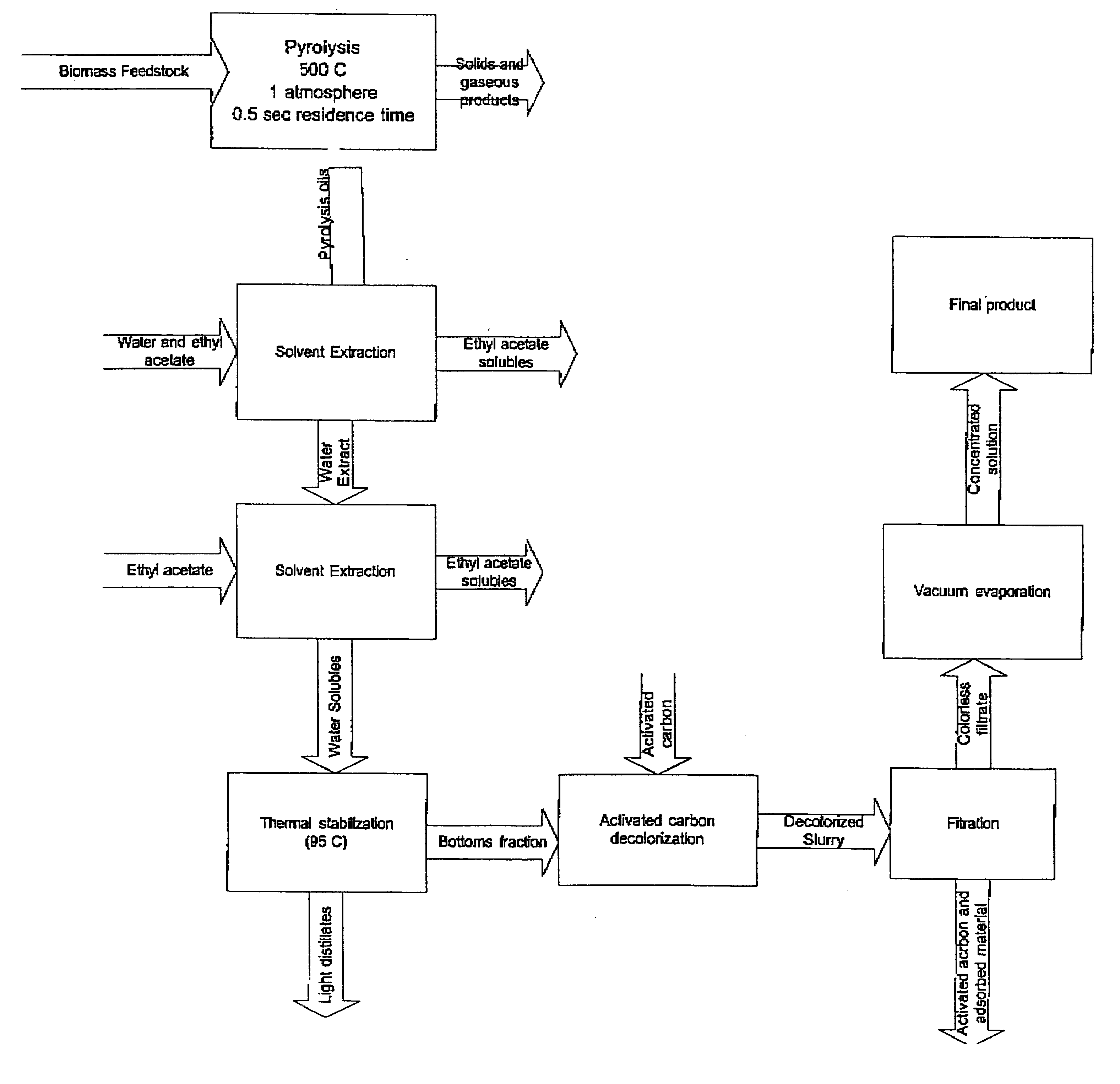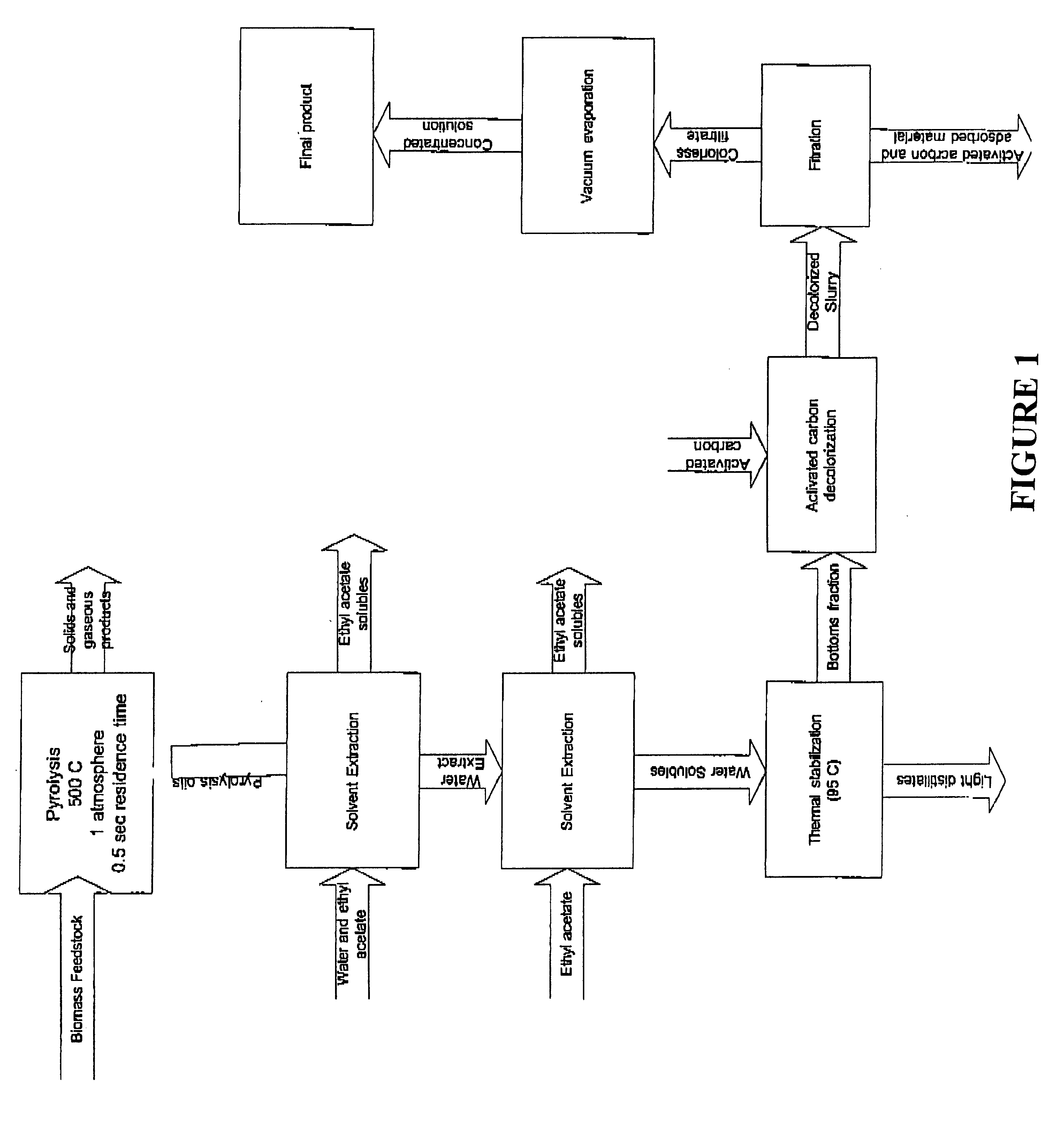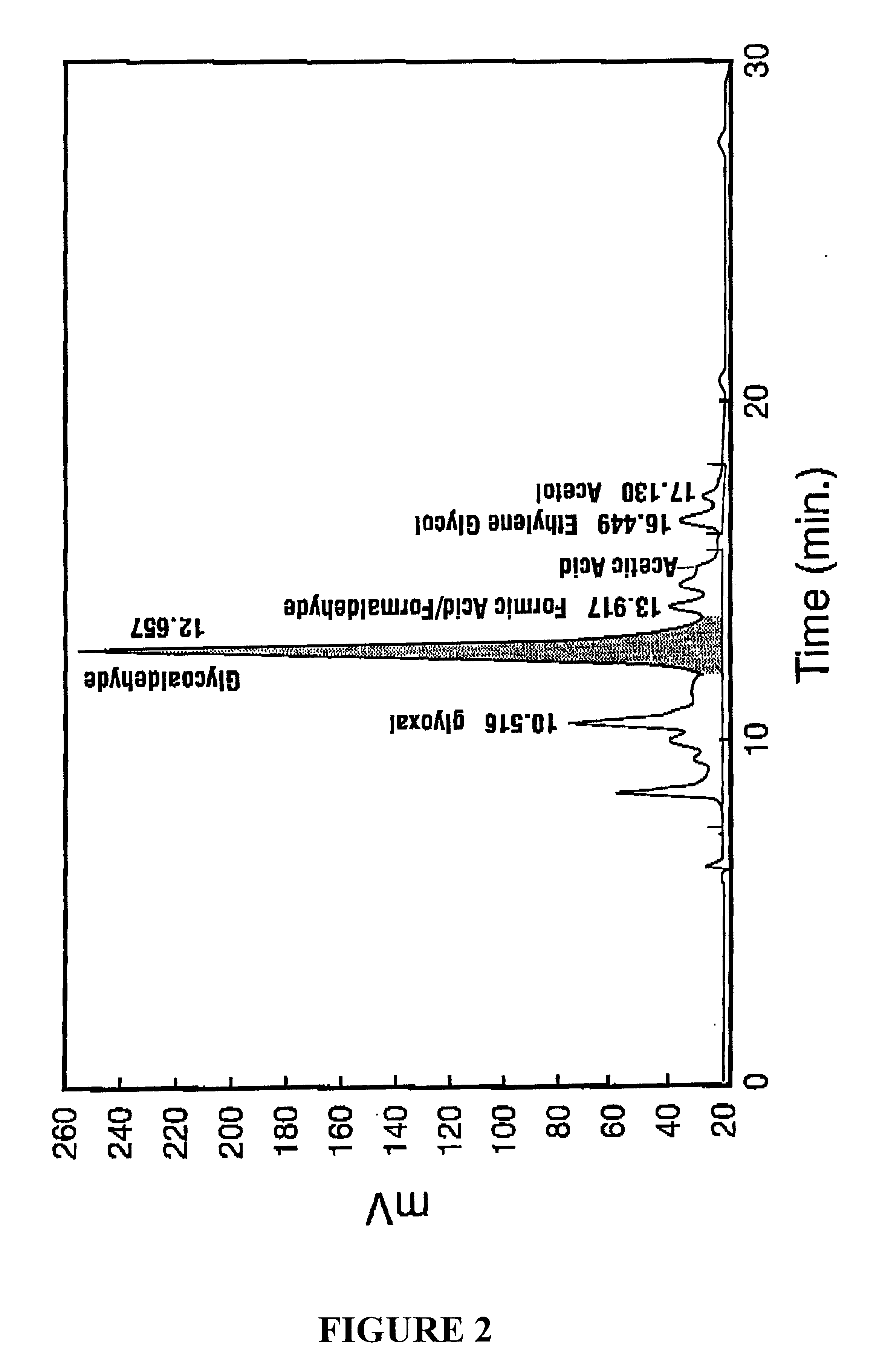Preparation of brightness stabilization agent for lignin containing pulp from biomass pyrolysis oils
a technology of brightness stabilization agent and biomass pyrolysis oil, which is applied in the preparation of carbonyl compounds, non-fibrous pulp addition, separation processes, etc., can solve the problems of limiting the use of these pulps in various grades of printing papers, easy and extensive darkening, and relatively mild bleaching
- Summary
- Abstract
- Description
- Claims
- Application Information
AI Technical Summary
Problems solved by technology
Method used
Image
Examples
example 2
Hybrid poplar, a hardwood, was pyrolyzed under conditions similar to those described in EXAMPLE 1. The resulting pyrolysis oils were water and solvent extracted as described in EXAMPLE 1. The resulting solution was analyzed by HPLC and found to have a similar composition as the solution in EXAMPLE 1. This solution was found to be effective as a brightness stabilization agent for lignin-containing paper or pulps.
example 3
Sugar cane bagasse (agricultural residue) was pyrolyzed as described in EXAMPLE 1, and the resulting solution had a similar composition as EXAMPLE 1 when analyzed by HPLC. This solution was found to be an effective brightness stabilizing agent for lignin-containing pulps and paper.
example 4
Switch grass (a herbaceous biomass) was pyrolyzed and the pyrolysis oil was extracted as described in EXAMPLE 1. Analysis of this solution by HPLC revealed that this solution had a similar chemical composition as EXAMPLE 1. The solution was found to be effective as a brightness stabilizing agent for lignin-containing pulps.
PUM
| Property | Measurement | Unit |
|---|---|---|
| temperatures | aaaaa | aaaaa |
| temperatures | aaaaa | aaaaa |
| average wavelength | aaaaa | aaaaa |
Abstract
Description
Claims
Application Information
 Login to View More
Login to View More - R&D
- Intellectual Property
- Life Sciences
- Materials
- Tech Scout
- Unparalleled Data Quality
- Higher Quality Content
- 60% Fewer Hallucinations
Browse by: Latest US Patents, China's latest patents, Technical Efficacy Thesaurus, Application Domain, Technology Topic, Popular Technical Reports.
© 2025 PatSnap. All rights reserved.Legal|Privacy policy|Modern Slavery Act Transparency Statement|Sitemap|About US| Contact US: help@patsnap.com



